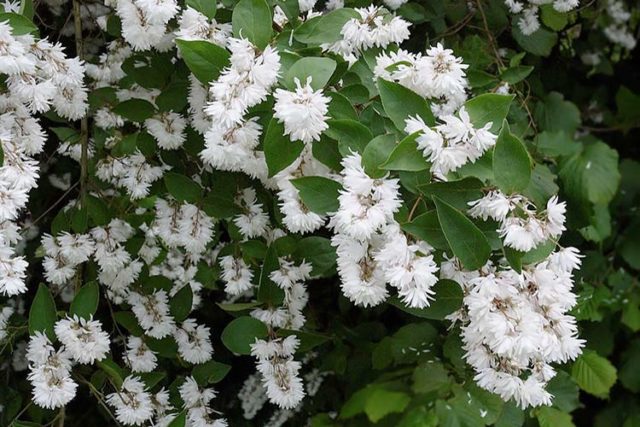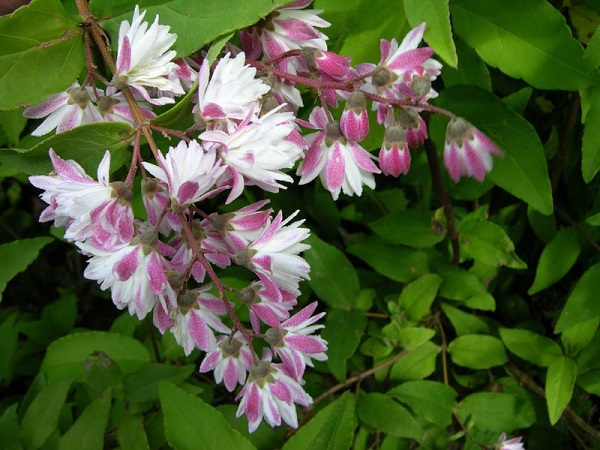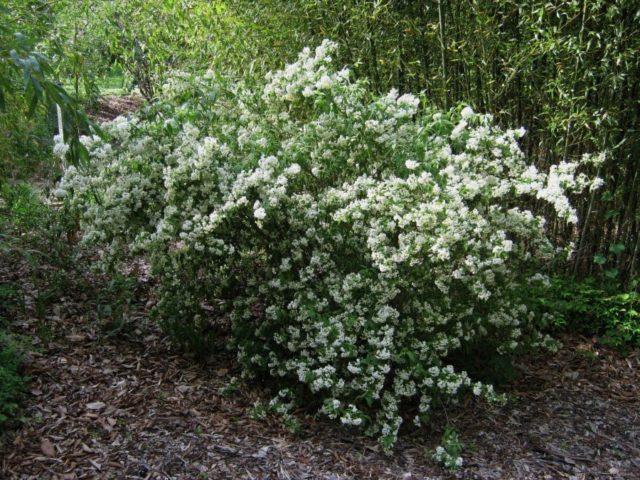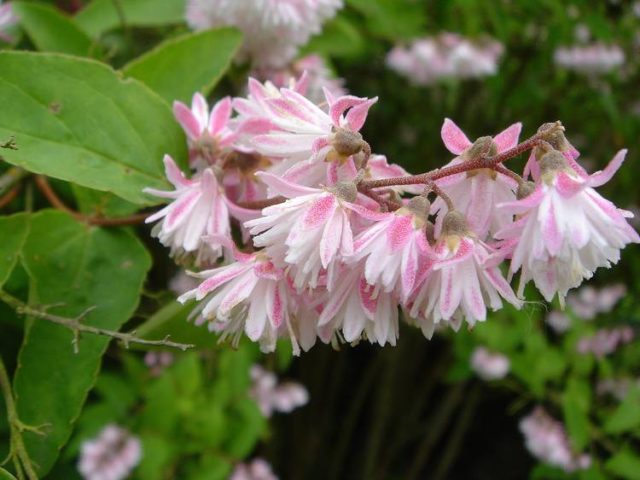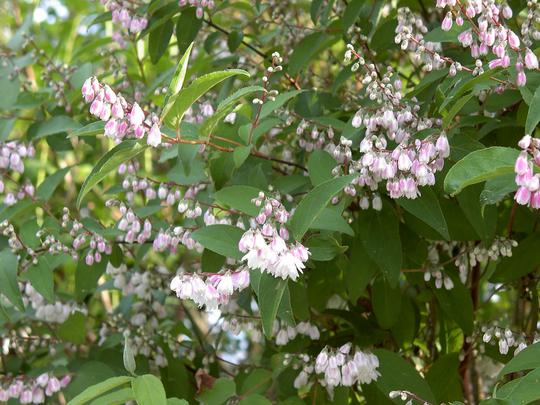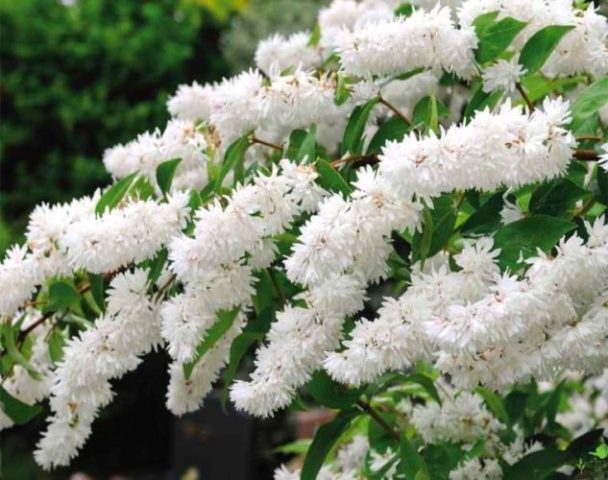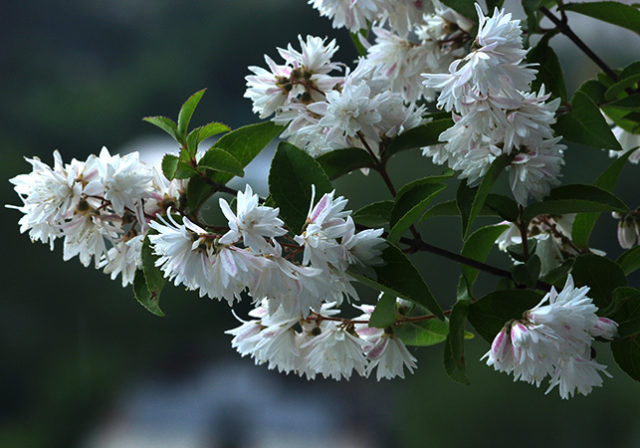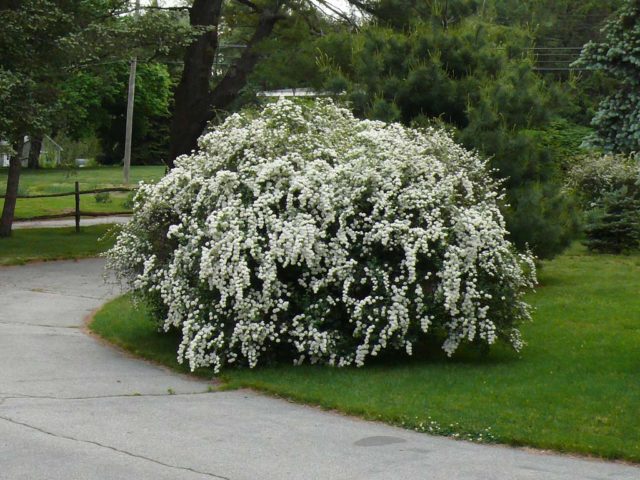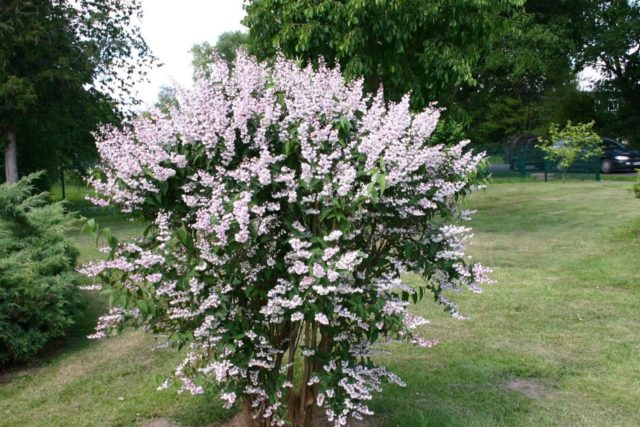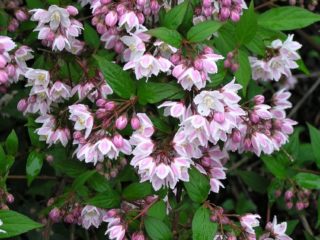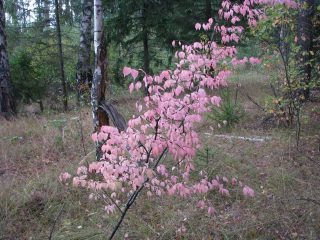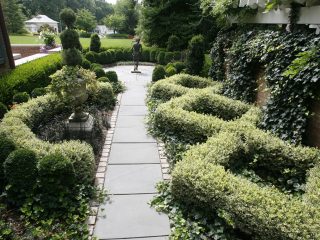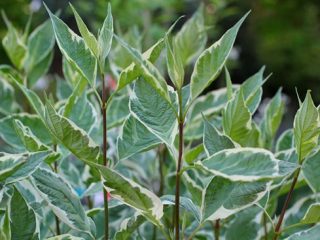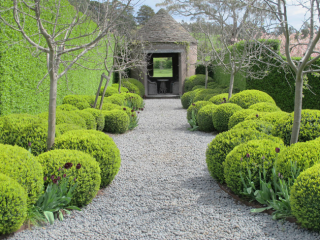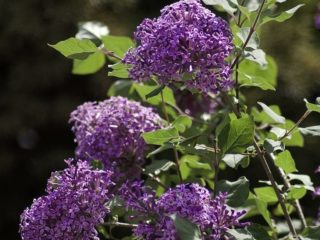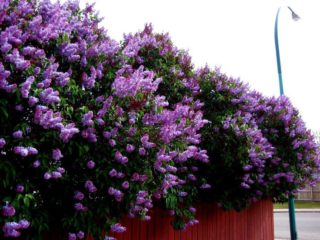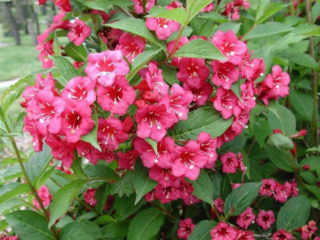Content
Rough deutzia is a deciduous ornamental shrub of the Hydrangeaceae family. The plant was brought to Russia in the 19th century by Dutch merchants. By the beginning of the 21st century, about 50 varieties had been studied. Ideal for both single plantings on the lawn and for creating a hedge. Group plantings of rough deutsia near the gazebo look good. Thanks to its high decorative qualities, the shrub has gained popularity among gardeners. And its unpretentiousness allows even beginners to grow it.
General description of rough action
Deutzia scabra is a lush shrub whose height varies from 1 to 3 m depending on the variety. The leaf blade is pubescent and has a rough surface.
The color of the flowers can be white or pink in various shades. In almost all varieties they somehow resemble bells. In the photo below you can see that they are collected in inflorescences at the very ends of the shoots.Their length can reach 10-15 cm. By type they can be either terry or semi-double. The smell is weak or absent. Flowering of Deytia rough begins in June-July.
The shoots of the shrub are erect, but there are also varieties with curved branches. The surface of the shoots is in most cases smooth. Some varieties are distinguished by a layered type of chora, which is very flaky. At 2-3 years, the branches become brittle - this happens because a hollow space forms inside them. This factor is important to consider when covering bushes for the winter - they should not be sharply bent.
The lifespan of the shrub varies from 20 to 50 years.
Popular varieties of rough action
There are many varieties and hybrid forms of Deutia shershava, but not all can be grown in the Russian climate. The following varieties are popular.
Captivity
Deytsia rough of the Plena variety attracts attention with its densely double white-pink flowers, which in appearance resemble wide bells. The height of the bush is on average 1-1.5 m, the crown of the Plena variety is of medium density. Shoots of erect type. The leaves are covered with small fibers, which is why they are rough to the touch.
Candissima
Planting and caring for the Candissima variety is basic; a photo of the shrub is presented below. A distinctive feature of this variety is the pink buds, which during flowering turn into double snow-white flowers. They form large paniculate-type inflorescences.
The Candissima variety is not frost-resistant and needs good winter shelter.
Codsell Pink
Deutzia rough variety Codsell Pink is a variety with a dense crown and curved shoots. The height of the Codsell Pink action reaches 2.5 m, the diameter is usually 2 m. The flowering of the variety begins in June, the color of the petals of the flowers is light pink. The type of flowers is double, collected in inflorescences resembling loose panicles. The length of the inflorescences can reach 15 cm.
Pride of Rochester
Deutzia roughis variety Pride of Rochester has the appearance of a tall shrub with a fairly dense crown. The branches of the plant are erect, growing upward. The height of this variety varies from 2 to 3 m, the diameter of the crown is on average 2.5 m. The flowers of the rough variety Pride of Rochester are white, double. The plant blooms in early June.
Mona Lisa
Deutzia rougha variety Mona Lisa is a medium-sized shrub with double-type flowers that form long, flowing inflorescences. The plant reaches a height of 1.2-1.5 m. It blooms from the end of May for 2 months.
The advantages of this variety include high frost resistance - this is one of the winter-hardy varieties of Deytia rough, which requires minimal shelter.
Whitest
According to the description, Deytsia rough of the Beleishaya variety can reach 1.5-2 m in height. Life expectancy is on average 40-50 years. The shrub cannot be propagated by seed - the Beleishaya variety was obtained through hybrid means.
In the photo of the shrub Deutzia rough White, which is below, large snow-white flowers. Their diameter is 3 cm, the length of the inflorescences can reach 10-12 cm.
Features of reproduction
You can propagate rough deytia in several ways:
- seed;
- layering;
- cuttings;
- dividing the bush.
The most commonly used method is taking cuttings and propagating by layering.Large old shrubs are dug up and divided into 3 parts, which are then planted. With this method of propagation, all dry and damaged shoots are cut off.
Planting material is harvested in the spring.
Rules for planting and care
Planting and caring for deytia rough in the Moscow region is not particularly difficult even for a novice gardener. The shrub cannot be called capricious; it grows on almost any type of soil, does not need frequent watering and rarely gets sick. Deutia is weakly attracted to insects; only one species poses a threat to the plant. The advantages of the culture include the rapid rate of recovery after frostbite. If the bush was covered for the winter too late or incorrectly, the shoots will grow back during the season after freezing.
Recommended timing
Deutzia rough is planted in open ground from April to June; more precise dates depend on the local climatic conditions of the region. It is recommended to plant after the soil has warmed up.
Site selection and soil preparation
The place for planting the bush is chosen taking into account the following recommendations:
- Deytsia rough is very vulnerable to drafts and cold winds. Plantings should be located in a place sheltered from strong gusts of north wind.
- Groundwater on the site should not be too high. The distance from them to the ground surface should be at least 2-3 meters, preferably more.
- Deytsia rough is undemanding to the composition of the soil; the best type of soil for it is loose, fertile soil with good water permeability. The shrub develops well in neutral and slightly acidic soils.
If the soil in the selected area is poor, it is dug up with a spade 2-3 weeks before planting and fertilizers are added to the soil. A mixture of sand, turf garden soil and humus, taken in a ratio of 1:2:2, has proven itself well. Additionally, this combination is diluted with mineral compounds containing nitrogen, potassium and phosphorus. In addition to them, you can add a small amount of wood ash or lime flour.
Landing algorithm
The procedure for planting deytsia rough is as follows:
- In the prepared area, dig a planting hole 50-60 cm deep and about 50 cm wide.
- If the seedling has open roots, then straighten them before planting. All dried and broken ones are removed, after which the planting material is dipped in the Kornevin growth stimulator for 2-6 hours.
- If the planting material was grown in a container, carefully inspect the earthen ball of the seedling. Sometimes the roots at the bottom of the coma become very intertwined. In this case, they are separated.
- After this, the seedling is buried, the root collar should be at ground level.
- Complete planting with watering. To do this, use a solution of a root formation stimulator.
Additionally, the area around the tree trunk is mulched. This way moisture will be better retained in the soil.
Rules of care
Deytsia rough is an unpretentious species, but it needs care. It allows you to protect the bush from a few parasites and provides the bush with abundant and long-lasting flowering. The main procedures for caring for action rough include the following:
- watering;
- loosening the soil;
- feeding;
- pruning;
- preparation for winter.
Watering
Water the plant moderately, 2-3 times a month, if the season is hot and dry.During periods of prolonged rain, watering is reduced to once a month; if precipitation is heavy, then it is stopped. Additional moisture will not benefit the shrub; on the contrary, stagnation of water in the soil can cause rotting of the roots. Resume watering when the top layer of soil is completely dry.
After watering and rain, it is advisable to loosen the area around the tree trunk - this is done in order to break up the compacted top layer of soil, which blocks the flow of oxygen to the roots of the plant. Loosen shallowly so as not to damage them.
Top dressing
Feeding of deytsia rough of all varieties is carried out 2-3 times per season according to the following scheme:
- The first time the bush is fertilized with humus is when the tree trunk circle is mulched immediately after planting. ½ bucket is enough for 1 bush.
- During flowering, the action is fed with liquid mineral solutions.
- Shortly before pruning, you need to add a mullein solution to the soil, which is diluted with water in a ratio of 1:10. No more than 1 bucket is needed for 1 plant.
Trimming
Sanitary pruning of deytia rough is carried out in May-June, when all frozen and broken shoots are removed. As soon as the bush has faded, you can begin formative pruning. Branches 4-5 years old are pruned into rings, and weak and poorly developed shoots are also removed. In addition, young branches that stand out from the general mass are pruned.
Preparing for winter
Preparing rough action for winter is carried out in several stages:
- The first step is to reduce watering from the beginning of August. By the end of the month, they stop watering the plant.
- In early September, it is recommended to cover the shrub with waterproof material so that excess moisture does not reach its roots. This is necessary so that the Deutia rough wood matures well before the onset of the first frost.
- The first time the plant is covered immediately after the night temperatures drop. To do this, the shoots of the bush are pressed to the ground, trying not to damage them. To prevent the branches from unbending, they are pinned to the ground with staples.
- The shoots bent to the ground are covered with dry grass or fallen leaves.
- Additionally, you can insulate rough deutsia with spruce branches. The bush is covered with spruce branches when the average daily temperature drops to below zero. The spruce branches hold snow and prevent the action from freezing during the winter months.
In the spring, with the onset of warmth, the shelter is removed. You can’t delay this, as the insulated deutzia may burst in warm weather. 10
Pests and diseases
Deutzia roughis has immunity to most diseases of garden crops, so it does not need preventive treatments. Of the insects, the greatest threat to the bush is the bumblebee moth or bumblebee proboscis. Bumblebee caterpillars are able to eat a large number of leaves from a plant in the shortest possible time, so you should not delay treatment of the bush - as soon as possible after detecting insects, the plant is sprayed with insecticides. Among them, the most effective against parasites are:
- "Karbofos";
- "Decis";
- "Lepidocid-BTU";
- 15% solution of "Ftalofos".
Conclusion
Rough deutzia, among other species, is distinguished by long-term flowering - the shrub retains its attractive appearance for 1.5-2 months. The advantage of this culture is that deutzia blooms immediately after lilac. This allows you to expand the boundaries of decorative planting on the site.
You can also learn more about how to grow Deutia rougha in your garden plot from the video below:
